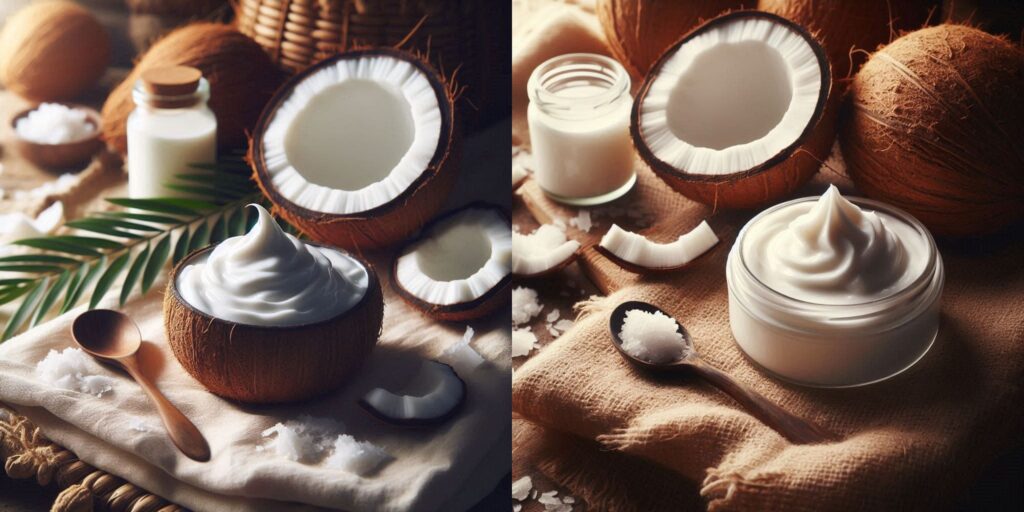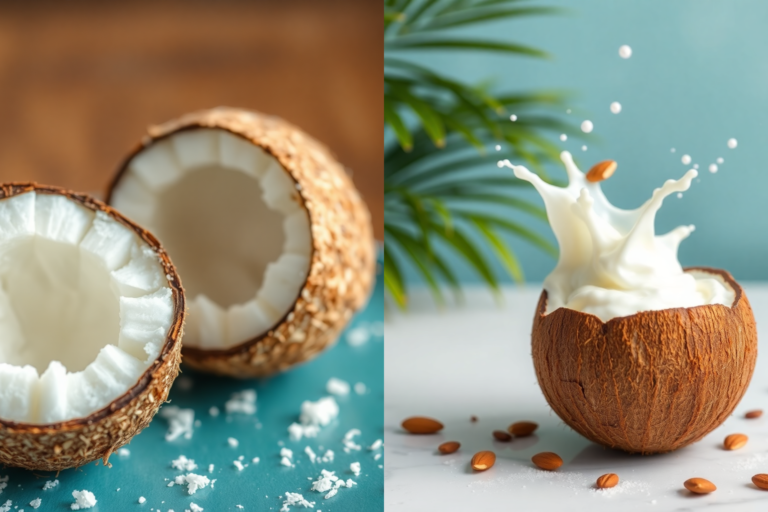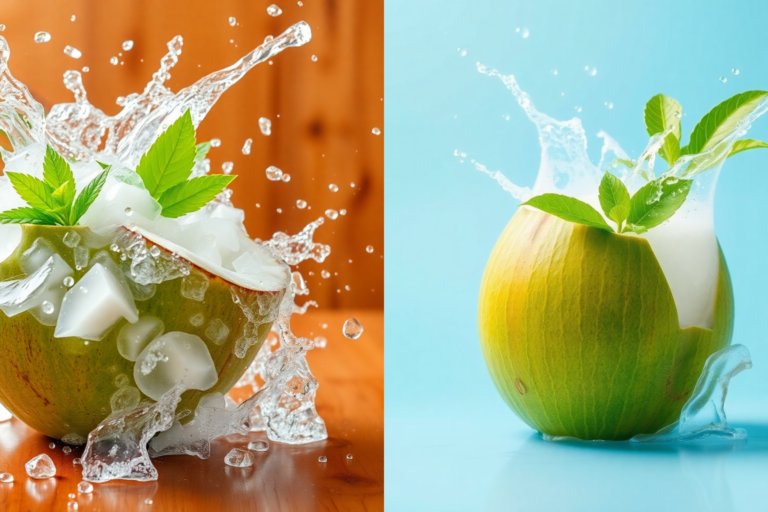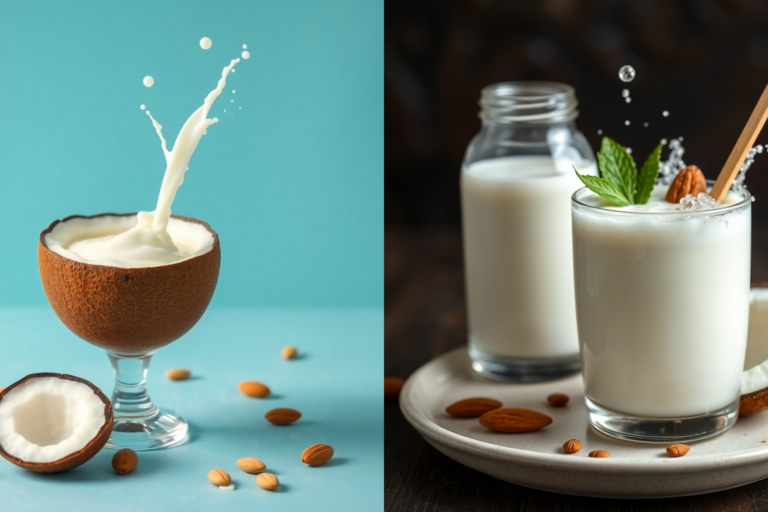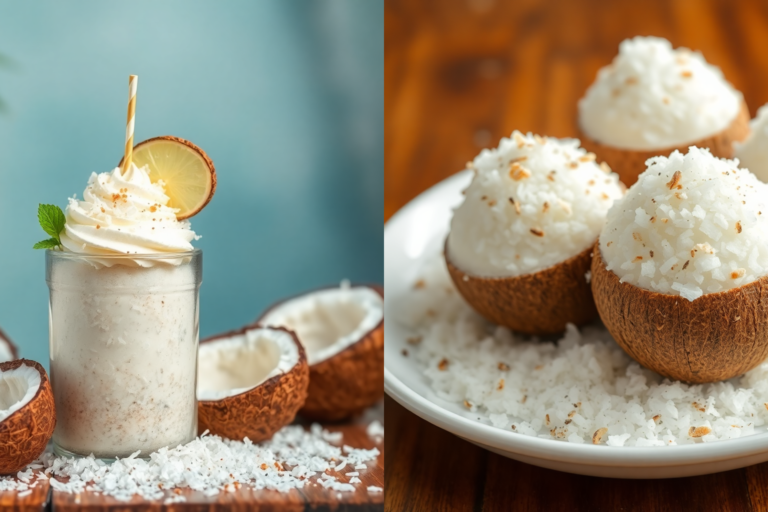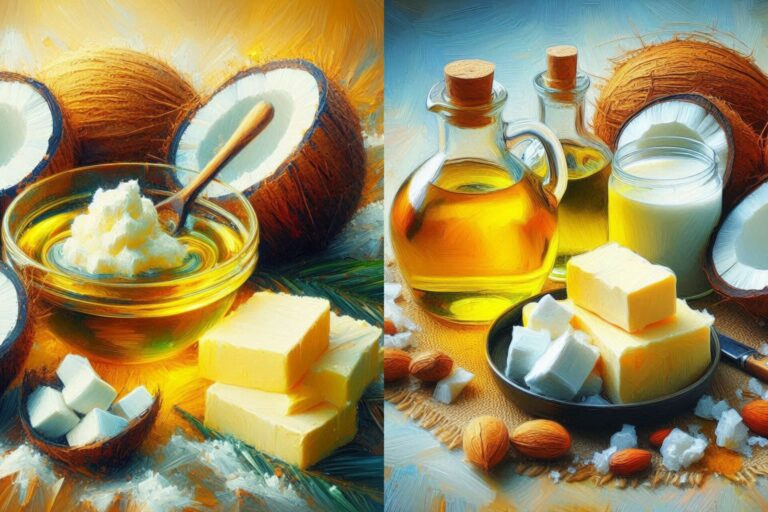Introduction of Coconut Cream Uses
Coconut cream is a rich, velvety product derived from the meat of mature coconuts. It’s often confused with coconut milk, but it’s thicker, creamier, and higher in fat content, giving it a luxurious texture and deep flavor. Coconut cream has gained widespread popularity in both culinary and beauty spheres due to its versatility and numerous benefits. In cooking, it is a staple ingredient in various cuisines, especially in tropical dishes, adding a unique sweetness and creaminess to soups, curries, sauces, and desserts. In beauty and skincare, coconut cream uses include moisturizing dry skin, nourishing hair, and even serving as a natural base for DIY beauty treatments.
Over recent years, the demand for coconut cream has surged as more people discover its potential in enhancing flavors and boosting the nutritional profile of meals. Its high-fat content, primarily composed of medium-chain triglycerides (MCTs), contributes to its health benefits, such as supporting metabolism and energy production. Additionally, the natural compounds found in coconut cream make it a sought-after product for those seeking wholesome, plant-based alternatives in their diet and beauty routines.
Coconut Cream Uses
1. Culinary Applications: Versatile Coconut Cream Uses in the Kitchen
Coconut cream is beloved in many cuisines, particularly in Southeast Asian and Caribbean dishes. It adds a depth of flavor to both savory and sweet recipes. Whether used in creamy coconut curries, rich soups, or decadent desserts like coconut cream pie and coconut panna cotta, the versatility of coconut cream is unmatched. It can even be incorporated into beverages such as tropical smoothies and exotic cocktails for an extra touch of indulgence.
2. Nutritional Benefits of Coconut Cream
Beyond its culinary appeal, the nutritional profile of coconut cream makes it a worthy addition to a healthy diet. Coconut cream contains healthy fats that support energy levels and metabolic functions, helping the body absorb essential vitamins. It is also a source of antioxidants, which can help combat oxidative stress. Regular incorporation of coconut cream into meals can promote heart health and provide a sustained energy boost.
3. Coconut Cream Uses in Beauty and Skincare
Coconut cream is a well-known natural moisturizer that’s perfect for those seeking non-toxic beauty solutions. Its emollient properties make it ideal for nourishing dry, flaky skin, while its high-fat content can help lock in moisture for longer periods. Coconut cream uses in skincare routines include applying it as a face mask, a rich body lotion, or even a hydrating hand cream. It also works wonders as a conditioner for dry hair, giving it a soft and glossy finish.
4. How to Store and Use Coconut Cream
Proper storage ensures that coconut cream maintains its freshness and optimal texture. Coconut cream should be kept in an airtight container in the refrigerator for up to a week or frozen for longer shelf life. When preparing meals, it can be whipped or blended to create a lighter texture, suitable for whipped toppings or added to smoothies for a creamy consistency.
Conclusion
Coconut cream’s versatility makes it an invaluable ingredient in the kitchen and a multifunctional asset in skincare. Whether you’re using it to enhance your cooking or nourishing your skin, the numerous coconut cream uses ensure it is a staple worth keeping in your pantry or beauty kit. Embrace the richness and multifunctionality of coconut cream and discover the endless ways it can enhance your daily life.
Benefit 1: Culinary Versatility – Exploring the Wide-Ranging Coconut Cream Uses
Coconut cream is an exceptionally versatile ingredient, renowned for its ability to enhance both savory and sweet dishes. Its rich, creamy texture and subtly sweet flavor make it an ideal addition to an array of recipes, transforming ordinary meals into extraordinary culinary experiences. The versatility of coconut cream uses extends from comforting soups and stews to decadent desserts, making it a staple in kitchens that embrace creativity and flavor.
Coconut Cream Uses in Savory Dishes
When it comes to savory recipes, coconut cream uses are abundant. This ingredient is a favorite in many global cuisines, particularly in Southeast Asian and Indian recipes, where it adds a luxurious touch to curries, soups, and sauces. The creamy consistency and distinct taste of coconut cream provide depth and richness, balancing out spices and creating harmonious flavor profiles.
For example, coconut cream uses in curries can create velvety, flavor-infused sauces that cling to vegetables, chicken, or seafood, creating a dish that is both satisfying and indulgent. A classic creamy coconut chicken curry is a perfect example, where coconut cream melds with spices like turmeric, cumin, and coriander, resulting in a dish that’s rich yet comforting. Coconut cream is also excellent in soups, providing a hearty and nourishing base that enhances flavors. A popular example is Thai coconut soup (Tom Kha), where coconut cream combines with lemongrass, ginger, and mushrooms for a soothing and aromatic meal.
Coconut Cream Uses in Sweet Treats
On the sweeter side of things, coconut cream uses shine just as brightly. Its naturally sweet taste lends itself well to a variety of dessert recipes, from pies and cakes to creamy puddings and chilled treats. For instance, coconut cream uses in a coconut cream pie bring a smooth, satisfying consistency to the filling, paired with a flaky crust and topped with toasted coconut for added texture and flavor. The ability of coconut cream to whip into soft peaks also makes it an excellent base for whipped toppings, perfect for garnishing desserts or mixing into tropical fruit salads.
Coconut cream is also used to create dairy-free versions of traditional desserts, making it an appealing option for those who are lactose intolerant or following a vegan diet. Recipes like coconut cream panna cotta or chilled coconut cream mousse showcase how this ingredient can be transformed into an elegant dessert that mimics the creaminess of dairy-based options.
The Power of Coconut Cream Uses
The diversity of coconut cream uses is what makes it a pantry essential. Whether you’re preparing a hearty dinner or a show-stopping dessert, coconut cream adds a layer of indulgence and healthful richness. Its high fat content provides satisfying creaminess, while its subtle flavor makes it suitable for both bold and delicate dishes. Its versatility in the kitchen not only showcases the creativity that coconut cream enables but also highlights its ability to pair seamlessly with a variety of ingredients, enhancing flavors without overpowering them.
Quick Recipe Ideas Featuring Coconut Cream
- Coconut Cream Curry: Combine coconut cream with spices, chicken or tofu, and vegetables for a rich, hearty dish.
- Coconut Cream Pie: A classic dessert with a buttery crust, a coconut-flavored custard filling, and a whipped coconut cream topping.
- Thai Coconut Soup (Tom Kha): A warming soup with coconut cream, lemongrass, and mushrooms.
- Coconut Cream Panna Cotta: A smooth, creamy dessert infused with a hint of vanilla or citrus.
- Creamy Coconut Chicken Curry: A dish with tender chicken simmered in a coconut cream sauce with aromatic spices.
Benefit 2: Nutritional Value of Coconut Cream
Coconut cream is not just a rich, creamy addition to dishes but also a nutrient-dense ingredient that offers numerous health benefits. By incorporating coconut cream uses into your daily meals, you can harness the essential nutrients that support overall well-being. This tropical ingredient is packed with key vitamins, minerals, and healthy fats that contribute to energy production and a balanced diet.
Key Nutrients in Coconut Cream
Coconut cream is loaded with a variety of nutrients that play significant roles in maintaining health. The primary nutrients found in coconut cream uses include:
- Healthy Fats: Coconut cream is known for its high content of medium-chain triglycerides (MCTs), which are easily digestible fats that are rapidly converted into energy by the body. These fats support metabolic health, aid in weight management, and promote brain function. Including coconut cream uses in your diet can be a great way to boost energy levels, especially for those following a ketogenic or low-carb diet.
- Vitamins: Coconut cream contains essential vitamins such as vitamin C and certain B vitamins, which help strengthen the immune system and contribute to skin health. Vitamin C, for example, is an antioxidant that combats free radicals and aids in collagen production, while B vitamins help support cellular metabolism.
- Minerals: A rich source of minerals like potassium, magnesium, and iron, coconut cream uses can help maintain healthy muscle function, manage blood pressure, and support red blood cell formation. Potassium helps regulate heart function and hydration, while magnesium is vital for muscle and nerve function. Iron, meanwhile, is essential for oxygen transport throughout the body, ensuring that energy levels remain optimal.
The Role of Coconut Cream in Energy and a Balanced Diet
Incorporating coconut cream uses into your meals can be beneficial for energy levels due to the high MCT content. MCTs are unique because they bypass the digestive tract and go directly to the liver, where they are converted into ketones. This process provides a rapid source of energy that can be especially useful for athletes, busy professionals, or anyone who needs a natural energy boost during the day.
Additionally, the combination of healthy fats, vitamins, and minerals in coconut cream uses supports a balanced diet by offering nutrients that are important for various bodily functions. For instance, the healthy fats in coconut cream contribute to satiety and help regulate blood sugar levels, making it a suitable option for people managing their weight or those seeking a healthier alternative to high-calorie, processed fats.
Coconut Cream Uses in Your Diet
The versatility of coconut cream uses makes it an excellent addition to both savory and sweet dishes. From creamy curries to tropical desserts, it can elevate any dish with its rich texture and nutritional profile. Here are a few ways to incorporate coconut cream uses into your meals:
- Savory Dishes: Coconut cream can be used as a base for rich and creamy curries, such as Thai green curry or Indian coconut chicken curry. Its high-fat content adds a luscious quality to these dishes and helps balance spicy flavors.
- Desserts and Sweets: Add coconut cream uses to recipes like coconut cream pie, coconut milkshakes, or coconut panna cotta for a decadent, dairy-free treat that still offers nutritional benefits.
- Smoothies and Beverages: Blend coconut cream into smoothies for an added boost of energy and a silky texture. It pairs well with tropical fruits like pineapple and mango, or even with chocolate for a rich and indulgent drink.
- Baking: Use coconut cream uses to create moist, flavorful cakes, muffins, or scones. It provides a subtle sweetness and richness that complements coconut flour and other gluten-free flours.
Benefit 3: Dairy-Free Alternative – Coconut Cream Uses You Need to Know
Coconut cream is a highly versatile ingredient that serves as an excellent substitute for dairy products in vegan and lactose-free recipes. With the growing awareness and adoption of plant-based diets, finding suitable alternatives that mimic the richness and texture of dairy has become more important than ever. Coconut cream uses not only meet these dietary needs but also enhance the flavors and textures of various dishes.
Why Coconut Cream is a Great Dairy-Free Substitute
Coconut cream is derived from the rich, fatty portion of fresh coconut milk and offers a creamy consistency similar to heavy cream. This makes it a perfect option for individuals who are vegan, lactose-intolerant, or seeking to reduce their intake of animal-derived products. Unlike traditional dairy, coconut cream is plant-based, meaning it can be enjoyed by those with lactose intolerance or a preference for a plant-based lifestyle without compromising on taste or texture.
Coconut Cream Uses in Vegan and Lactose-Free Recipes
Coconut cream uses extend beyond simple substitutions; they enhance the taste and texture of recipes that traditionally rely on dairy. Whether you’re creating savory dishes or indulgent desserts, coconut cream’s versatility shines through:
- Cooking and Sauces: Coconut cream can be used as a base for soups, curries, and sauces, providing a rich, velvety consistency. For example, it’s a vital ingredient in Thai coconut curry, where it balances spicy flavors with its natural sweetness and creaminess.
- Desserts: In baking and sweet treats, coconut cream uses include making whipped toppings or creamy fillings for pies and tarts. It can also be chilled and whipped to create a dairy-free whipped cream substitute that’s perfect for topping cakes, cupcakes, and fruit salads.
- Beverages: Coconut cream uses aren’t limited to food; they can transform drinks like smoothies, lattes, and milkshakes. Adding coconut cream to these beverages imparts a tropical, smooth richness that pairs beautifully with fruits and other flavors.
The Benefits of Coconut Cream as a Dairy-Free Alternative
- Non-Dairy and Lactose-Free: Coconut cream naturally lacks lactose, making it suitable for people with lactose intolerance and those on a vegan diet.
- Creamy Texture and Rich Flavor: The dense, velvety texture of coconut cream adds depth and a luxurious mouthfeel to dishes, replacing the creamy properties of dairy without any animal ingredients.
- Nutrient-Rich: While dairy alternatives often lack essential nutrients, coconut cream brings its own set of health benefits, including healthy fats that support energy production and metabolism.
How Coconut Cream Uses Support a Plant-Based Lifestyle
Using coconut cream in recipes is an excellent way to maintain flavor and richness while embracing a plant-based diet. The natural sweetness and texture of coconut cream pair well with other plant-based ingredients, helping to create balanced and satisfying dishes. Plus, coconut cream is rich in medium-chain triglycerides (MCTs), which are beneficial fats that can boost energy and contribute to overall wellness.
Culinary Versatility of Coconut Cream Uses
One of the most appealing aspects of coconut cream is its adaptability. It can be used as a substitute for dairy in a wide range of recipes, from rich pasta sauces to comforting soups and creamy desserts like coconut panna cotta or coconut ice cream. Its ability to seamlessly integrate into both savory and sweet dishes makes it a pantry staple for anyone seeking dairy-free options.
Benefit 4: Skin and Hair Care – Coconut Cream Uses
Exploring Coconut Cream Uses in Natural Beauty Routines
Coconut cream is a versatile and natural beauty ingredient known for its moisturizing and nourishing properties. It is derived from the rich, fatty meat of coconuts and is more concentrated than coconut milk. Due to its high content of healthy fats and essential nutrients, coconut cream has become a staple in many homemade beauty routines. Whether used on the skin or hair, coconut cream can deliver profound hydration and promote overall health.
How Coconut Cream Uses Benefit Skin
Coconut cream’s natural emollient properties make it an excellent moisturizer for dry and sensitive skin. It helps form a protective barrier that locks in moisture, which is essential for skin hydration and combating rough patches. With its rich composition of vitamins and antioxidants, coconut cream can help soothe irritation and promote the repair of damaged skin.
Simple DIY Skincare Recipes Using Coconut Cream
Coconut Cream Hydrating Face Mask: Mix 2 tablespoons of coconut cream with a teaspoon of honey and a few drops of lemon juice. Apply the mask to your face and let it sit for 10–15 minutes before rinsing off with lukewarm water. This mask deeply hydrates the skin and brightens the complexion while delivering anti-inflammatory benefits.
Coconut Cream Body Scrub: Combine 1/4 cup of coconut cream with 1/2 cup of sugar and a few drops of your favorite essential oil. Gently rub this scrub on your body in circular motions to exfoliate dead skin cells and leave your skin feeling smooth and refreshed.
Nourishing Coconut Cream Hand Lotion: Mix coconut cream with a small amount of almond oil and a few drops of lavender essential oil. Massage this mixture into your hands to moisturize and protect them from dryness, especially in colder months.
Coconut Cream Uses for Hair Health
Coconut cream is also highly beneficial for maintaining healthy hair. It’s packed with vitamins such as Vitamin E and essential fatty acids that help nourish the scalp, promote hair growth, and prevent dryness. Regular application of coconut cream can improve hair strength, reduce frizz, and add a natural shine.
DIY Hair Treatments Featuring Coconut Cream
Deep Conditioning Coconut Cream Hair Mask: Combine 1/2 cup of coconut cream with 2 tablespoons of olive oil and a few drops of rosemary essential oil. Apply the mixture to your hair, focusing on the ends, and let it sit for 20–30 minutes. Wash with a gentle shampoo for hair that feels hydrated, soft, and revitalized.
Coconut Cream Scalp Treatment: For those suffering from a dry or flaky scalp, mix coconut cream with a small amount of tea tree oil. Gently massage this mixture into your scalp and leave it for 15 minutes before rinsing thoroughly. This helps soothe irritation and promotes a healthier scalp environment.
Coconut Cream Leave-In Conditioner: Blend 1 tablespoon of coconut cream with a few drops of argan oil and use it as a leave-in conditioner. Apply a small amount to the ends of your hair for ongoing moisture and shine without weighing it down.
Why Coconut Cream Uses are Essential for Beauty Routines
The versatility of coconut cream makes it a must-have ingredient for anyone looking to embrace natural beauty. It’s not only beneficial as a topical application but also helps replenish the skin and hair with essential nutrients without the use of harsh chemicals. This makes coconut cream an environmentally friendly, sustainable choice for individuals seeking to maintain healthy, glowing skin and lustrous hair.
Benefits Recap: Coconut Cream Uses for Beauty
- Moisturizes dry skin and helps treat skin conditions such as eczema and psoriasis.
- Promotes hair health, reducing split ends and preventing dryness.
- Natural and chemical-free, making it suitable for all skin and hair types.
- Antioxidant-rich, providing added protection against harmful environmental factors.
Incorporating coconut cream into your beauty regimen can be simple and rewarding. From DIY face masks to revitalizing hair treatments, the myriad of coconut cream uses will keep your skin and hair looking and feeling their best.
Benefit 5: Potential Health Benefits of Coconut Cream
Coconut cream, known for its rich, creamy texture and distinct flavor, is not only versatile in culinary applications but also offers a range of potential health benefits. These benefits make it an attractive ingredient to include in your diet. Understanding coconut cream uses can help you take full advantage of its properties to support overall well-being.
Supporting Heart Health
One of the prominent coconut cream uses lies in its potential role in promoting heart health. Coconut cream is known for containing medium-chain triglycerides (MCTs), which have been studied for their beneficial effects on cardiovascular health. MCTs are metabolized differently from long-chain fatty acids; they are rapidly absorbed and converted into energy, which may help improve cholesterol levels by increasing the levels of good HDL cholesterol. Including coconut cream in your diet can contribute to a balanced, heart-healthy nutritional plan when consumed in moderation.
Boosting Metabolism
Coconut cream uses extend beyond its flavor and texture—it can also contribute to a boost in metabolism. The MCTs found in coconut cream are a unique type of fat that can promote faster metabolic rates, aiding in the process of burning calories. By incorporating coconut cream into meals or snacks, you can support your body’s energy production and potentially aid in weight management and overall metabolic health. This is especially beneficial for those who are active and require an additional energy source that is efficiently utilized by the body.
Anti-Inflammatory and Antioxidant Properties
Coconut cream also boasts powerful anti-inflammatory and antioxidant properties, thanks to its rich composition. The lauric acid present in coconut cream has been shown to possess anti-inflammatory effects, helping to reduce inflammation within the body. Chronic inflammation can lead to various health issues, including joint pain, digestive disorders, and cardiovascular problems. By including coconut cream uses in your diet, you may help your body combat these inflammatory responses naturally.
Additionally, the antioxidants found in coconut cream contribute to cellular health by neutralizing harmful free radicals. This antioxidant activity supports immune function and can help reduce the risk of chronic diseases. The natural compounds in coconut cream work synergistically to maintain skin health, promote anti-aging benefits, and support overall bodily functions.
How to Include Coconut Cream for Health Benefits
To reap the benefits of coconut cream uses, consider incorporating it into your diet in creative ways. Add it to smoothies or use it as a base for rich, nutritious sauces and soups. Coconut cream can also be a delightful addition to desserts, providing both a decadent texture and nutritional perks. By choosing organic, unrefined coconut cream, you can maximize the health benefits while minimizing unnecessary additives.
When using coconut cream, it’s important to consume it in moderation. While it does offer heart-healthy and metabolism-boosting properties, it is still high in calories and fat. A balanced approach will ensure you enjoy its health benefits without compromising your dietary goals.
